[Download Now] Steve Andreas – PTSD Full Training
$325.00 Original price was: $325.00.$42.00Current price is: $42.00.
[Download Now] Steve Andreas – PTSD Full Training
[Download Now] Steve Andreas – PTSD Full Training
PLEASE CHECK VIDEO OF ALL CONTENTS : WATCH HERE!
Steve Andreas – PTSD Full Training
Video 1:
Demonstration
A demo of the “movie theater” method for distancing from the events in a traumatic memory.
After a brief introduction to the training, and to the key distinction between recalling a
memory by being inside it or as an outside observer, I invite Shelley to the front of the room
to work with me using the “movie theater” method for distancing from the events in a traumatic
memory. This method is also called the NLP phobia cure, or Reconsolidation of Traumatic Memories.
Shelly is a local resident who had been in 8 car accidents in which she was rear-ended.
In a brief phone conversation I learned that as a result she has frequent flashbacks,
and also chronic headache pain. When I want to observe her nonverbal behavior during a
flashback, I ask her, “If you had a flashback now, what would I see? Think about one of the worst ones.”
Although that is a precise description of what I want, the way it was worded asked Shelley to
imagine how she looked from my point of view, rather than simply thinking of a flashback so that
I could observe her response.
Realizing my mistake, I shifted to simply asking her to remember a flashback. “What if you were
to have a flashback right now? It’s heavy traffic, it’s icy and snowy,” so that I could see her
response. Although Shelley confirmed that she felt terrified, that her life flashed before her eyes,
and that she would score her feelings as 10 out of a possible 10, her visible responses to reliving
an accident were relatively subtle.
This method is also demonstrated with an Iraq vet in the program Releasing PTSD: The Client Sessions.
3-month follow-up:
“I haven’t had ANY flashbacks of the car accidents that I can remember since you worked with me.
YAY!! If I deliberately think of one of the accidents, it just doesn’t have the impact that it used to have.”
Video 2 – The Phobic Core of PTSD: Discussion
This question and answer segment of the training immediately follows
the demonstration of the process used with the phobic core of PTSD,
and focuses on the movie theater process, aka the RTM method or V/K dissociation.
The second phase of the protocol, Creating Alternative Memories, is
discussed in the third segment, which follows this one.
Video 3 – Creating Alternative Memories
This segment begins with a repetition of the demonstration of this process,
which is also included in the complete demonstration of the process used with
the phobic core of PTSD. If you would like to skip this demonstration, fast-forward
approximately 6 ½ minutes to reach the discussion segment.
This process creates an alternative to a traumatic memory in which the outcome is
improved by the client doing something different that is a realistic possibility
within the situation — relaxing, taking some protective action, saying something different,
foreknowledge of possibility, a different attitude, or some other behavioral response to
the traumatic event that is within the client’s control. It is absolutely essential to
not alter external events, or any physical injuries that resulted from those events
because that is magical thinking that will conflict with reality.
If a truck rear-ends your car, and you suffered a broken bone or other injury,
it is imperative not to try to change those in your new alternative memory.
However, it is OK if your change in behavior results in a change in the behavior of
others in a way that improves the outcome. This process can also be useful in other
contexts to program a more useful response to a situation that might occur again in the future.
3-month follow-up:
“I haven’t had ANY flashbacks of the car accidents that I can remember since you
worked with me. YAY!! If I deliberately think of one of the accidents, it just doesn’t
have the impact that it used to have.”
Video 4 – Pain Control
I spoke to Shelley on the phone about being a demonstration subject
for PTSD a few days before the seminar, to be sure that her experience
was appropriate for the process. At that time she mentioned that she
had frontal headache pain as a result of closed head injuries in two
of her 8 car accidents, which I assume is the same as, or similar to,
mild or moderate traumatic brain injury (TBI). Her headache was always
present, so it certainly qualified as chronic.
In this segment, recorded about an hour or so after using the PTSD
protocol, we work to alter her pain in a variety of ways.
3-month follow-up:
“I had a headache that day & the pain did lessen somewhat.
I’m NOT having headaches EVERY day (which is AWESOME & I’m VERY grateful)
but I’m taking 3 tylenol extra strength painkillers daily the rest of the
time IF I have a headache — which generally occurs the second I get up.”
I hadn’t made clear to Sherrie that while the movie theater and alternative
memory reruns are usually interventions that are effective after doing them
in one session, pain control methods often have to be practiced repeatedly
whenever necessary so that they become more automatic.
Since she doesn’t have headaches every day now, that is an indication that
with some practice it may be possible to lessen them even more, and perhaps
even eliminate them. She is going to practice doing the methods, and I will
check in with her later.
Video 5 – Eye Movement Integration
A useful alternative method for working with PTSD is to use eye
movements to spontaneously alter a memory. The most widely-known
and researched version of this process is Eye Movement Desensitization
and Reprocessing (EMDR), developed by Francine Shapiro. In this session
I demonstrate and discuss a somewhat different, but closely related
method, Eye Movement Integration Therapy (EMIT) developed by Connirae
and Steve Andreas.
The demonstration I attempted with a participant in the group soon
resulted in very strong feelings of aversion to any eye movements in
the left half of her visual field. (In some 20 years of using this
process in trainings and with clients, this is the first time this has
happened.) After some attempts to proceed, and after learning that this
seemed to be related to unresolved grief over a special friend’s death
many years earlier, I decided to stop the demonstration. I explained to
the group that I didn’t want to force her, and wanted to know more before
proceeding.
In the days that followed, I talked with her several times, and made
some suggestions for things she could try on her own to explore this
further. On the fourth day of the training, she described what she had
discovered, providing us with at least some understanding of what was
going on. This section is included here, where it is directly relevant
to the discussion about my decision to stop the process. For a sample of
how an EMIT session usually goes, see the excerpts from my 1993
demonstration with a Vietnam Veteran.
Andrew T. Austin has developed a streamlined version of EMIT, Integral
Eye Movement Therapy (IEMT), which can be easily integrated with other
therapeutic approaches. I did not demonstrate this method; Austin demonstrates
this method clearly in a YouTube video.
Video 6 – Eye Movement Integration:
Further Discussion
Further discussion after the exercise is followed
by a report from Michelle on her continued exploration of
her experience recorded on the last day of the training.
3-month follow-up:
No change.
Video 7 – The Decision Destroyer: Demonstration
The morning of the second day begins with almost 18 minutes of a variety of
questions from the previous day’s training. The demonstration begins at about 17:30.
In this process, we build a life-changing experience that occurs
before a traumatic period or event, so that it prepares them for what
happens later, making it easier to deal with. This process is particularly useful for
abuse or other difficulties that occurred repeatedly over a period of time (in contrast to a single event).
This new life-changing experience has four important criteria:
It occurs at a specific time and place before the traumatic event or
period.
The content is chosen by the client, and may be positive or negative when
it happened, but is positive in its results when remembered.
It has lots and lots of detail, to make it as similar as possible to
other remembered experiences in the client’s life.
When the memory is complete, it is represented in the same submodalities
as a positive imprint experience in the client’s life.
When this memory is complete, the client is asked to bring the memory with them
as they travel rapidly up through time to the present, allowing the memory to
change all relevant subsequent events, and then to see themselves traveling on into the future with this memory as a part of them.
3-month follow-up:
“The anxiety that I felt about financial issues used to keep me awake at night;
sometimes I would get a racing heart in the middle of the night.
Since going through the treatment I have not experienced even mild anxiety and that
has generalized into other areas; I still have everyday mild concerns, but it doesn’t
have a hold on me anymore and I don’t experience the physical component of feeling anxious.
My husband and daughter have both noticed a big difference. I really feel like a different (and happier) person;
so many things that used to have a ‘hook’ on me are simply gone.”
Video 8 – The Decision Destroyer:
Discussion
Following the demonstration, there is considerable
discussion of the many different elements in this process,
and how they all contribute to maximizing its effectiveness.
Video 9 – Personal Boundaries
We all have an internal mental personal boundary that protects us from
unwanted intrusions from others. Our boundaries are learned and created
unconsciously, and few of us have examined them to find out how well they
function. By experimenting with alternatives, in the contexts in which we
need protection, we can discover improvements, and these improvements will
result in spontaneous changes in our experience in the real world.
For instance, someone who has spent a lot of time in a very dangerous situation
like war will usually develop a boundary that results in a lightning fast
response to any threat, which is entirely appropriate in that context.
When they return to civilian life, this hair-trigger boundary is no longer
functional, and this may result in frequent episodes of rage and violence
that are “all out of proportion” to the triggers.
The handout also explores how to identify and change any internal boundaries
inside the body. We did not have time to demonstrate this in the training,
but the instructions are clear, and more discussion can be found in the book,
Transforming Yourself, chapter 13. (This method is also demonstrated with an
Iraq vet in the program Releasing PTSD: The Client Sessions.)
Follow-up:
Soon after the demonstration, Ronit reported confirmation of a change in her
response to someone she had difficulties with. Three months later, she reported,
“The boundaries process really helped, it’s an inner anchor now, that I carry with me.”
Video 10 – Resolving Grief
Don was part of a march protesting the Ku Klux Klan in Greensboro
North Carolina in 1979 when the Klan appeared and started shooting
protestors. Don was shot, and several of his friends were killed.
He had previously used the movie theater process on the incident as
a whole, but he hadn’t resolved the grief over the loss of his friends,
so I took him through the grief resolution process.
Although this was successful, Don was still haunted by the image of
one of his friends, Sandy, with a hole in her forehead, lying dead in
a pool of blood. So we used the movie theater process again on this
image. This example highlights how someone’s experience can be a mixture
of different aspects, and the importance of teasing them apart so that
each can be resolved using the appropriate process.
(The Resolving Grief method is also demonstrated with an Iraq vet
in the program Releasing PTSD: The Client Sessions.)
3-month follow-up:
“When I think of Sandy now I see her see her life-size and animated,
in her kitchen cooking dinner and talking with my wife and me. There is
no sadness in that picture, just a warm and pleasant memory.
“Before working with Steve, I had dealt with that incident by walling
it off, keeping in a place where I didn’t have to think about it. Now I can
recall it and talk about it without experiencing that terrible sadness, not
only around Sandy but also the other four who were killed that day (actually,
I was closer to a couple of them than I was to Sandy). Steve had me take that
picture that I was seeing, make it dim and black-and-white, move it far away,
and ‘stick it there with Velcro.’ It has remained there; I can still see it if
I want to, but if I do it doesn’t bother me.”
Video 11 – Resolving Anxiety:
Spinning Feelings
This method, originally discovered by Richard Bandler,
is very useful for anxiety, or any other strong feeling,
making it useful as part of reaching a wide variety of change
work outcomes. It is one of the simplest and most dependable processes.
(This method is also demonstrated with anger and rage with an Iraq vet in the
program Releasing PTSD: The Client Sessions.)
3-month follow-up with Jane:
“The changes we made to release anxiety are still in
place and working well. If that feeling does come up,
I continue to see the sparkling blue spiral and calm down immediately.”
After the demonstration with Jane, I used the same method
with a career army veteran who had not slept well for the
previous 22 years; he would stay awake for 3 or 4 days and
finally get so exhausted he would fall into a fitful sleep,
and sometimes wake up in a sweat, imagining someone at the
foot of his bed. Sometimes he would be awake for longer and
take an Ambien. Although he would go into a deep sleep, his
wife said that he would yell and scream all night.
Since he did not want to appear on video, we recorded his
session on audio only, and recorded his report the following day,
in which he said that he had used the method twice and slept well, getting
up to go to the bathroom once at 3:20 and then going back to sleep for the rest of the night.
3-month follow-up with vet:
Normal deep sleep lasted until about two weeks after the training,
when he was faced with two stressful emergencies; his mother was
hospitalized with heart issues, and a son-in-law was diagnosed with
a brain tumor. He reports that “my brain is going a hundred miles an
hour; it’s all scatter, all kinds of issues coming together and it’s
hard to have deep sleep. I am using meds and self-medicating when I get really tired.”
That is what I call “overwhelm” and is typical of many people who have
difficulty sleeping. I have a blog post on “overcoming overwhelm” that
offers some methods for this. In conjunction with the slowing tempo method for anxiety,
I think that will probably take care of it. I will be following up with
him to find out what we can do so that he can sleep well again.
Video 12 – Transforming a Troublesome Internal Voice
Internal critical voices are
triggers for all sorts of problems,
from low self-esteem to depression and addictions,
and are also a main feature of Schizophrenia. Most
people try to avoid listening to a voice, or try to
shut up the “chattering monkey mind,” but that is
seldom useful, and seldom lasting.
In contrast, if you listen to the voice carefully and
learn more about it, you can make friends with it and
transform it into a supportive ally. The process
demonstrated here is a comprehensive way to accomplish
this. (This method is also demonstrated with an Iraq vet
in the program Releasing PTSD: The Client Sessions.)
3-month follow-up:
“I have noticed a big change in what used to be an
inner critical voice. I feel much more self-accepting
and self-loving. I have especially noticed that my body
image has changed and for the first time since I can remember
I have an inner peace about my body exactly as it is.
I really feel like a different (and happier) person;
so many things that used to have a ‘hook’ on me are simply gone.”
Video 13: Resolving Anxiety Temp Shift
Video 14 – Clarifying Relationships: Aligning Perceptual Positions
Aligning Perceptual Positions is a process for
sorting out our experience and clarifying relationships.
There are three fundamental viewpoints that we can
take in any interaction with someone else. We can be
in Self position, looking out of our own eyes, we can
take an objective Observer position, as if viewing both
ourselves and the other person from an outside point of
view, or we can take the position of the Other person we
are relating to. Each of these positions is valuable in different ways.
In Self position, we are fully aware of our own needs,
in Observer position we can dispassionately learn how we
appear from the outside, and in Other position we can become
much more aware of what someone else’s experience is. If we
can shift positions quickly, we can reap the information
that we get from each one, and have a balanced response to
whatever is going on at the moment.
Although each of us can naturally take all three different
positions, we may be unbalanced in how much time we use each one.
If we spend too much time in Self position, we may become arrogant
and insensitive. If we spend too much time in Observer position, we
may lose touch with feelings, and become robotic. And if we spend too
much time in Other position, we may become over involved with the other
person’s feelings and needs, and lose touch with our own — what has sometimes
been called co-dependent or enmeshed with someone else.
Even worse, we may become somewhat mixed up, for instance
including others’ feelings in self position, becoming judgmental in observer
position, or hearing a self voice in other position. When our experience is
even a little bit scrambled in this way, it becomes very hard to resolve
conflicts and disagreements or deal with everyday events.
Aligning Perceptual Positions is a process for sorting out our experience
in order to clarify who is who, and clarifying relationships.
3-Month Follow-up
“After the procedure, I find that I am more likely to step back and view
my interactions with others from observer position. I am less likely to get
embroiled in my own stuff when interacting with others and the distortions,
as I described in the session, are fewer. Along with the lack of distortions,
or comparative lack, I am more likely to imagine encountering people eye to eye.
Although I have had few interactions with my brother, his image is no longer
inflated and I am more likely to remember that that’s just who he is. Thanks
for a great experience.”
icon
Aligning Perceptual Positions
Video 15 – Forgiveness: Resolving Anger
The process for resolving anger is much the same as
for resolving grief. When the image of what provokes
anger is moved into the location of an experience of
forgiveness, the person will have a full-body experience
of forgiveness. However, since most people have many — and
sometimes very strong — objections to doing this, the major
task is to satisfy these objections.
Anger is a response that protects from a repetition of the
harm that was done. Objections always involve the need for
some kind of protection if they were to give up the anger.
Objections are always some variation on consequences
(“If I forgave him, then he could hurt me again.”) or
meaning (“If I forgave her, that would mean that I’m a
wimp, or that I condone what she did.”)
Sometimes it is very difficult to satisfy these objections,
and sometimes it may be impossible, but it has to be done
if someone is to reach forgiveness. For a detailed article
about the process, including how to satisfy objections, you
can read this free article on forgiveness.
Video 16 – Resolving Shame: Discussion
I had scheduled a woman who had shame about
childhood sexual abuse as a demonstration subject.
We had talked briefly on the phone, where I had made
it clear that we would be working in front of the
group and that we would be videotaped. However, it
soon became apparent that she hadn’t anticipated
how being publicly observed like this would elicit
the very shame we would be working with.
(Afterward someone told me how appalled she
looked when she entered the room at the back,
even before coming up to the front to work with me.)
I worked with her for about 23 minutes, before agreeing to
her second request to stop, realizing that the public context
made it impossible to continue. I have demonstrated the shame
process publicly before without difficulty, but in this case
her feelings were too intense. She had not signed a release
form, so I can’t include this portion of the video record.
As an alternative, there is a video on YouTube of excerpts
from a public demonstration and a free article on my website
has a verbatim transcript of a session with long-term follow-up.
The video from which this transcript was made is also available.
After this, I discussed what had happened with the group.
Video 17 – Resolving Guilt
Guilt results from violating your own values in a way that harms someone else. (In contrast, regret is when you violate your own values in a way that harms yourself.)
When you make a mistake, it is important to notice it, so that you can take corrective action to avoid harming others in the future. However many people get stuck in the bad feelings and dwell on the past, instead of learning from it so that they can do better next time.
Resolving guilt can also be described as self-forgiveness. Realizing that any moment in time everyone always makes the best choice available to them (no matter how badly that choice turns out) can build a foundation of balance and acceptance to commit to taking corrective action in the future.
During this session there was mention of The Brooklyn Project, a detailed program developed by Rick Gray for working with drug and alcohol abuse. To receive a free copy of this program, email [email protected].
Video 18 – Balancing Regret
Whenever you choose between alternatives, there is an
opportunity to regret the choice not made, so it is
impossible to live without regret. And no matter how
satisfying a choice turns out to be, you can always imagine
how a different choice might have been even more wonderful.
Some people torment themselves with regret, while others are
usually comfortable with the results of their choices.
Regret can be about something that you did do, or about
something that you didn’t do. Regret about what you did do
is usually very specific, because the consequences are known.
However, regret about what you didn’t do is more likely to be
less specific, because the consequences are much more uncertain and speculative.
Whenever you choose one alternative, you have to forego another,
so every regret is actually about both what you did do and didn’t do.
Even when we focus on one, the other is always in the shadow of our attention.
Attending to the consequences of both what you did do and didn’t do brings balance.
3-month follow up:
“The decision process was a good process, but I had other issues
I needed to solve before I could follow through. Thanks for everything,
I really enjoyed the seminar.”
Delivery Method
– After your purchase, you’ll see a View your orders link which goes to the Downloads page. Here, you can download all the files associated with your order.
– Downloads are available once your payment is confirmed, we’ll also send you a download notification email separate from any transaction notification emails you receive from IMC.sale.
– Since it is a digital copy, our suggestion is to download and save it to your hard drive. In case the link is broken for any reason, please contact us and we will resend the new download link.
– If you cannot find the download link, please don’t worry about that. We will update and notify you as soon as possible at 8:00 AM – 8:00 PM (UTC+8).
Thank You For Shopping With Us!
Be the first to review “[Download Now] Steve Andreas – PTSD Full Training” Cancel reply
Related Products
Hypnosis & NLP
Hypnosis & NLP
Hypnosis & NLP
Hypnosis & NLP
Hypnosis & NLP
Everything Else
Everything Else
Everything Else


![[Download Now] Stephen Parkhill - Healing The Body Using The Mind](https://imc.sale/wp-content/uploads/2022/02/Stephen-Parkhill-Healing-The-Body-Using-The-Mind-imc-100x100.png)
![[Download Now] Steve Andreas - PTSD Full Training](https://imc.sale/wp-content/uploads/2022/02/Steve-Andreas-PTSD-Full-Training-imc.png)

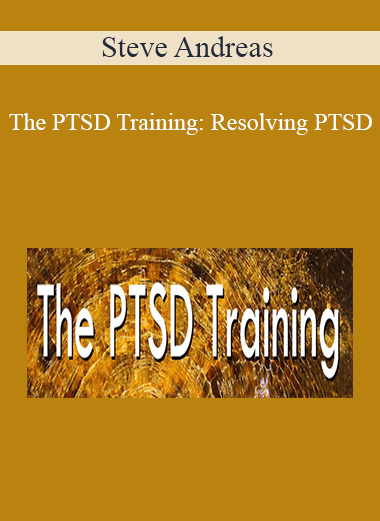
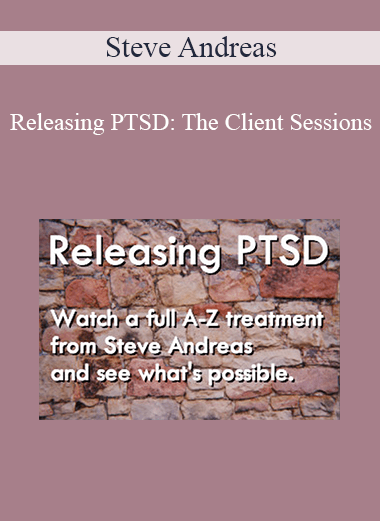
![[Download Now] Steve Andreas - NLP Eye Movement Integration](https://imc.sale/wp-content/uploads/2022/02/Steve-Andreas-–-NLP-Eye-Movement-Integration.png)
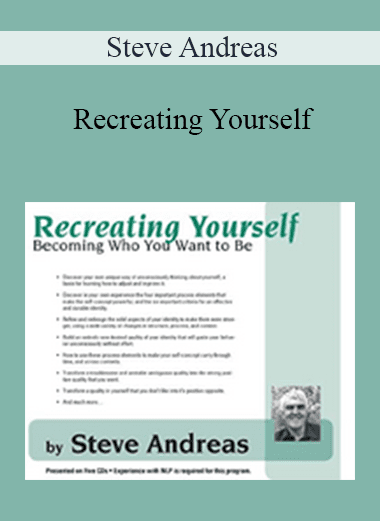
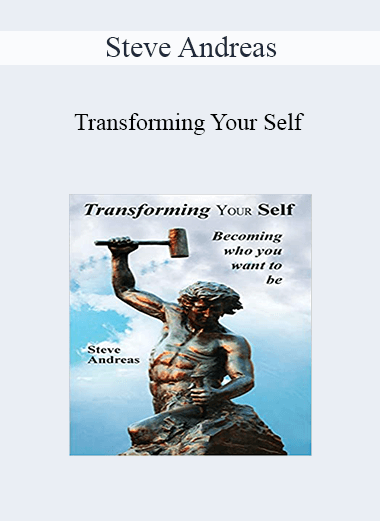
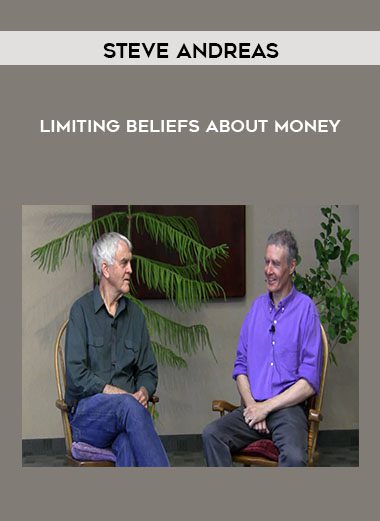
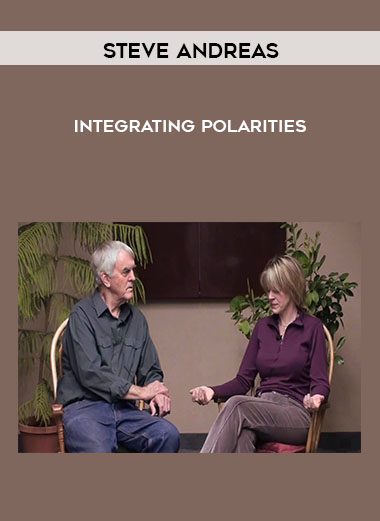
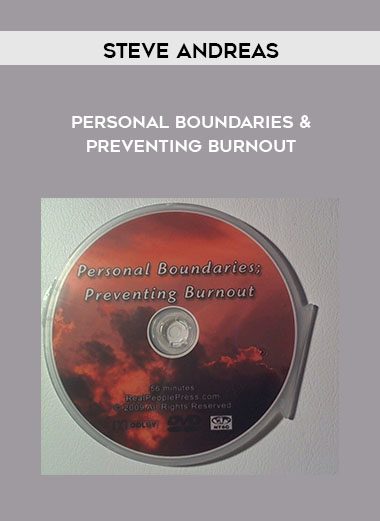
![[Download Now] Steve Andreas - PTSD Full Training](https://imc.sale/wp-content/uploads/2022/02/Steve-Andreas-PTSD-Full-Training-imc-100x100.png)
5 reviews for [Download Now] Steve Andreas – PTSD Full Training
There are no reviews yet.